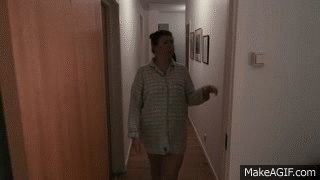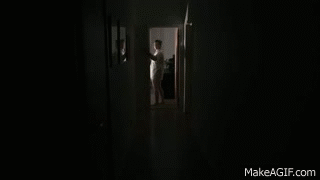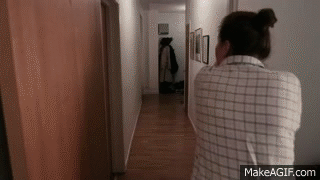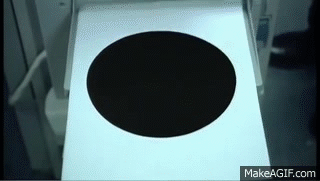In this blog post I will be writing about the narratives in a short film.

Narrative Devices
Structure Driven
Todorovs approach to narrative-In this theory there are five stages a narrative has to pass through.These include:



The Recognition of the movie is shown through the protagonist facial expression as it is denoted at 0.36-0.38 of a mid-shot of her face looking shocked /worried whilst her mouth is wide open.This connotes that the protagonist finally realises that something has entered the house and therefore he protagonist recognises that the equilibrium has been disrupted

Character Driven
Propp's approach to narrative-There are usually seven types of characters.This includes:
 Lights out:Villain- The female here is the protagonist and the demon is the villain. The Protagonist is usually played as a female in horror films.The villain here struggles with the her which is the female protagonist. In Addition the antagonists is usually played as a female as well.the antagonist face is revealed very briefly when she turns on the light at the beginning and also at the end. In some length horror films, the antagonist is never revealed,
The film is mainly based around romance however there is a
lot of element of science fiction. The main focus of the short film is the examination
of Sheldon and Francesca’s relationship and how it grows throughout the short
film. Francesca’s is the princess in the movie as she’s the one who falls in
love with Sheldon. The reason why they did this is to display the isolation of
both characters and how love can pop-out in any situation and fix their lives.
Lights out:Villain- The female here is the protagonist and the demon is the villain. The Protagonist is usually played as a female in horror films.The villain here struggles with the her which is the female protagonist. In Addition the antagonists is usually played as a female as well.the antagonist face is revealed very briefly when she turns on the light at the beginning and also at the end. In some length horror films, the antagonist is never revealed,
The film is mainly based around romance however there is a
lot of element of science fiction. The main focus of the short film is the examination
of Sheldon and Francesca’s relationship and how it grows throughout the short
film. Francesca’s is the princess in the movie as she’s the one who falls in
love with Sheldon. The reason why they did this is to display the isolation of
both characters and how love can pop-out in any situation and fix their lives.
Cause and Effect
Barthes narrative codes include:
Narrative Devices
- Flashback/forward-This usually goes to the future or the past.This does not really come up on short films.
- Red herrings-This is a wrong lead or distraction t the story which is very common in horror movies and shorts.
- Dramatic Irony-Audience knows more then the characters itself.
- Foreshadowing-This use hints out some elements which later come in the movies.
- Pathetic fallacy- The mood matches the weather.
- Plot twist-Something that changes the whole narrative in a unexpected way.
- Omnipotent narrative-the audience are godlike,knowing everything.
- Restricted narrative-The audience to really get that much information from one character or more
Examples:
Pathetic fallacy- Porcelain Rising Short Horror Film
At 0.30-0.37 the Scene denotes a shot of a girl in her bed looking frightened and scared.A flash of lighting fills the room up whilst non-digetic sounds of the rain is Playing in the background.This connotes the fear and emotion of the girl as she believes that there is something in her room which wants her.The use of the rain and lightning suggest that something bad is going to happen and also heightens the level of tension towards the audience as to why the little girl is scared.The use of the sound creates a more dramatic/scary atmosphere as this is very common in horror movies and short films.
Plot twist- Moon Dust (short film by Ezequiel Romero)
Moon dust has a really good twist plot.The short film is about a pilot who crashes a landing pod from the Moon in the middle of a forest. He carries a secret with him that could cost him his life.In this short film we realise that he is actually dead and this is shown After the astronaut is shot and the officer is looking at the celluloid pictures of the flag .As the audience we hear the astronaut's voice over saying "I think someone was there before us. And it was us."I thought this was a very clever twist within the short film.The use of this devices shocks the audience as it highlights the wrong lead or twist of the film.
Red herrings- Lights out
The scene denotes (0.31-0.37) a female switching the lights
on and off and seeing the body of the demon. This connotes that the lights
turning on and off is the red herring as that’s the wrong lead of the short
film as she should not be doing that as it will provoke the creature. This is
very common in horror films.
Todorovs approach to narrative-In this theory there are five stages a narrative has to pass through.These include:
- The equilibrium-state of normality,good,bad,or neutral.
- Disruption-An event which disrupts the equilibrium.
- Recognition-The protagonist recognises that the equilibrium has been disrupted.
- Restore equilibrium-The protagonist attempts to rectify this in order to restore the equilibrium.
- New equilibrium-May have been restored,there are difference from original equilibrium.
Lights out!

The equilibrium of this movie begins off with the state of normality being bad. This is denoted at 0.19 as she turns the light of and sees the creature in the dark.This connotes the beginning of the short film to start of bad as something is in her house.This is usually conmen in short horror movies to start off bad.

The disruption of the movie which disrupts the scene is the creature who is lurking in the dark.This is connoted at 0.19-0.35, as the protagonist is turning the lights on and off which provokes the creature to come closer to her.This connotes that the lights is the distraction as it reveals the creature in the house.


The Restore equilibrium is denoted at 0.40-0.48 as she gets her tape out and she tapes down her switch.This connotes that the protagonist knows that once the lights are turned off that will provoke the creature to get closer to her and therefore she tapes down her switch.
The new equilibrium is that it has not been restored as the bad event occurs at the end as the audience see the creatures face as she turns the lights off.The tape did not work in that situation.
Character Driven
Propp's approach to narrative-There are usually seven types of characters.This includes:
- Villain-struggles with the hero.
- Donor-Prepares/provides hero with magical agent.
- Helper-helps the hero.
- Princess-A goal which the hero marries or saves.
- Dispatcher-sends hero off.
- Hero-departs on a search reacts to the donor and weds at end.
- False hero-Claims to be the hero
 Lights out:Villain- The female here is the protagonist and the demon is the villain. The Protagonist is usually played as a female in horror films.The villain here struggles with the her which is the female protagonist. In Addition the antagonists is usually played as a female as well.the antagonist face is revealed very briefly when she turns on the light at the beginning and also at the end. In some length horror films, the antagonist is never revealed,
Lights out:Villain- The female here is the protagonist and the demon is the villain. The Protagonist is usually played as a female in horror films.The villain here struggles with the her which is the female protagonist. In Addition the antagonists is usually played as a female as well.the antagonist face is revealed very briefly when she turns on the light at the beginning and also at the end. In some length horror films, the antagonist is never revealed, Cause and Effect
Barthes narrative codes include:
- Enigma code-anything that sets up a question in the narrative
- Action code-those plot events that move the narrative forward
Enigma code and action code in the short film the black hole.The narrative and character in this short film uses key
moments such as the discovery of the black hole when printing the paper out.This is the action code as it makes the plot events move forward and make more sense.
This therefore invites the audience and to present a different unique style to
short film. This Short film only features one actor as his the one to discover
the black hole. This makes it hard for us and the audience to identify for pick
out the enigma within the film. But on the other hand the key reason for the back
hole ends up with the actor (protagonist) becoming overwhelmed and hypnotised
by causing himself to use the black hole a lot of the time and by punishing him
where he locked himself in the safe as
the paper fell towards the ground. This creates an enigma as the audience wants
to see what happens next due to the number of opportunities this short film may
have ended which is an action code and also how would the guy get out of the situation.

No comments:
Post a Comment